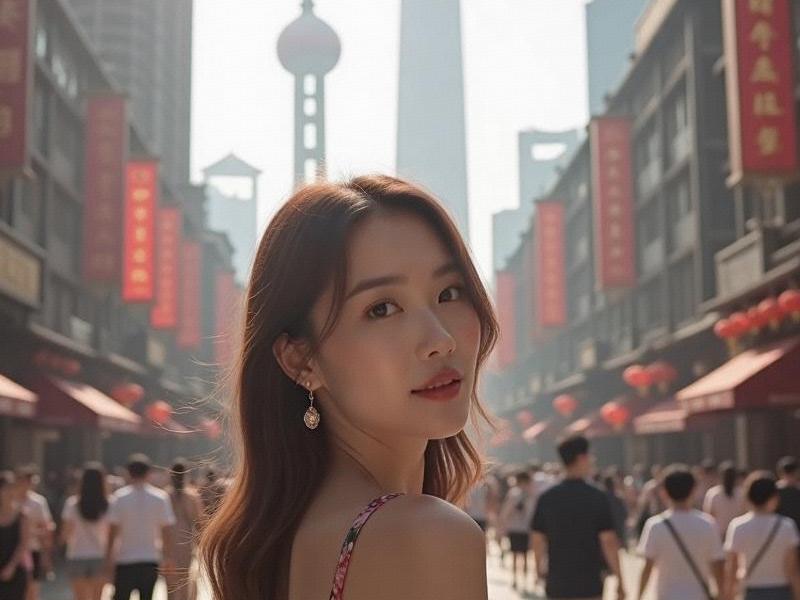An in-depth exploration of Shanghai's cultural transformation as it evolves into a global hub for arts and creativity while preserving its rich historical legacy.

The morning light filters through the stained glass of the restored St. Nicholas Church on the Bund, now housing a cutting-edge digital art installation. Across the river in Pudong, workers install avant-garde sculptures in the newly opened 88 Cultural Plaza. This juxtaposition captures Shanghai's cultural moment - a city simultaneously rediscovering its past and inventing its future.
The Creative Economy Boom
Shanghai's cultural and creative industries have grown explosively, now contributing 13.2% to the city's GDP. The West Bund Cultural Corridor stretches 11 kilometers along the Huangpu River, hosting 20 major arts venues including the Long Museum, Yuz Museum, and the newly opened Tank Shanghai contemporary art center. "We're seeing the emergence of a true cultural ecosystem," notes curator Li Zhenhua. "Galleries, studios, and performance spaces feed off each other's energy."
The numbers tell the story: Shanghai now hosts over 200 art galleries (up from 80 in 2015), 47 museums (including 12 private institutions), and attracts 3 million annual visitors to its cultural venues. The Shanghai International Arts Festival has grown into Asia's largest cultural event, featuring 300+ performances across six weeks.
Architectural Preservation Meets Innovation
上海花千坊龙凤 Shanghai's urban fabric tells its cultural story. The "Shikumen Renaissance" project has transformed 1,200 traditional lane houses into creative spaces while preserving their distinctive architectural character. In the French Concession, historic villas now host design studios next to original residents' homes. "We're not creating museum pieces," explains urban planner Zhang Wei. "We're keeping these neighborhoods alive through adaptive reuse."
New cultural landmarks push architectural boundaries. The recently completed Shanghai Library East, designed by SHL Architects, features a floating atrium and robotic book retrieval system. The 632-meter-high Shanghai Tower's observation deck has been reimagined as a vertical cultural space hosting rotating exhibitions.
The Art Market Transformation
Shanghai has emerged as a global art market hub. The annual ART021 and West Bund Art & Design fairs now rival Basel and Frieze in prestige, attracting top galleries from 30 countries. Sotheby's and Christie's have established permanent Shanghai spaces, while homegrown auction house Poly International set a record with its $245 million 2024 autumn sale.
上海品茶论坛 "The market here has matured incredibly fast," observes art advisor Maria Chen. "Collectors who started buying decorative works five years ago are now commissioning major installations." Shanghai's art storage facilities rival those in Geneva, with freeport facilities offering museum-grade conservation.
Cultural Challenges and Controversies
Shanghai's cultural rise hasn't been without tensions. The demolition of the historic Minsheng Wharf to make way for a new Guggenheim outpost sparked protests from preservationists. Some critics argue the city's art scene has become overly commercialized, with corporate sponsors influencing programming decisions.
The municipal government walks a fine line, supporting avant-garde expression while maintaining content guidelines. "We encourage artistic exploration within our social framework," says Cultural Bureau director Wang Hua. Recent exhibitions like "Memory and Metamorphosis" at Power Station of Art demonstrate the possibilities, blending politically neutral conceptual art with technical brilliance.
上海品茶网 The Regional Cultural Network
Shanghai's cultural influence radiates across the Yangtze River Delta. High-speed rail connects the city to Suzhou's garden museums, Hangzhou's ink painting academies, and Nanjing's historical sites within one hour. Joint programming like the "Eight Views of the Yangtze Delta" exhibition series highlights regional artistic traditions while fostering contemporary exchanges.
The newly established Delta Creative Industries Alliance has harmonized intellectual property protections across Jiangsu, Zhejiang, Anhui, and Shanghai, creating a unified market of 150 million cultural consumers. "Artists no longer see themselves as just Shanghai creators," notes sculptor Liu Yi. "We're part of a regional renaissance."
The Future of Shanghai Culture
Looking ahead, Shanghai's cultural ambitions know few bounds. The planned 2026 World Expo will feature the largest cultural program in the event's history, with pavilions transforming into permanent arts venues. The Hongqiao Cultural Hub under construction will dedicate 1 million square feet to experimental media arts.
As British architect David Adjaye, designer of the new Shanghai African Art Museum, observes: "Shanghai isn't just participating in global culture - it's starting to define what global culture means in the 21st century." From its jazz-age roots to its digital-age aspirations, the city continues rewriting its cultural narrative on an ever-grander scale.